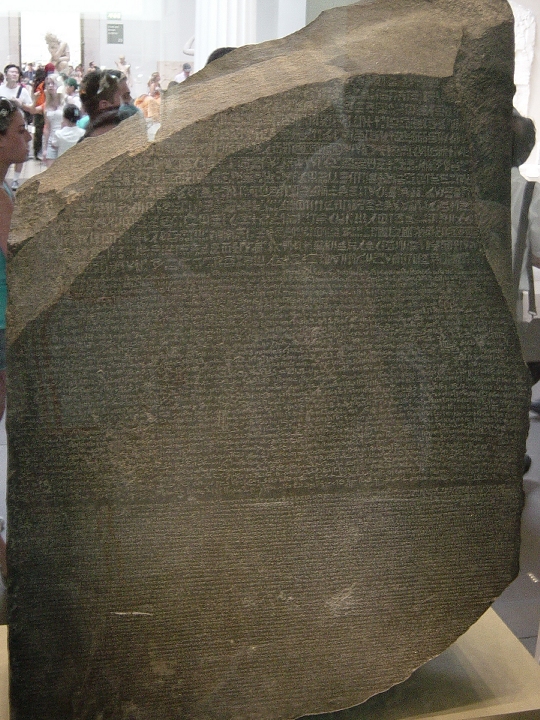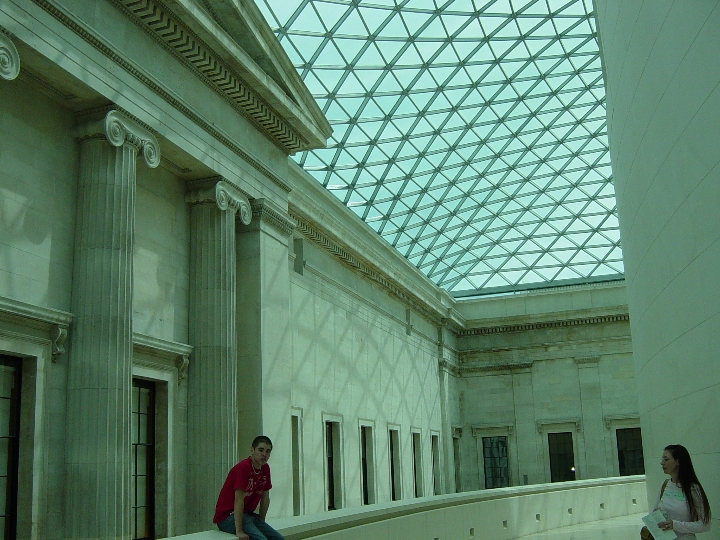| British
Museum -
Another major tourist destination in London is the British Museum. It isn't any secret the British have plundered a great deal of civilization's artifacts, and cultural treasures. One visit to the museum, is a testament to that. I had known of the Rosetta stone for several years, and it's importance to the archaeological world in it's gift of giving cross translations to Egyptian and Greek. The Rosetta Stone was written in three scripts. The first was Hieroglyphic, which was the script used for the important or religious documents. The second was Demontic Egyptian, which was the common script of Egypt. The third was Greek, which was the language of the rulers of Egypt at the time. The Rosetta Stone was created in 196 BC. And translated in 1822. Because Greek was well known, it allowed for the deciphering of the Hieroglyphics. The Rosetta Stone has been exhibited in the British Museum since 1802, with only one break. Towards the end of the First World War, in 1917, when the Museum was concerned about heavy bombing in London, they moved it to safety along with other portable, 'important' objects. The Rosetta Stone spent the next two years in a station on the Postal Tube Railway fifty feet below the ground at Holborn. |
 |
 |
| More British Museum Pictures - Page 2 |